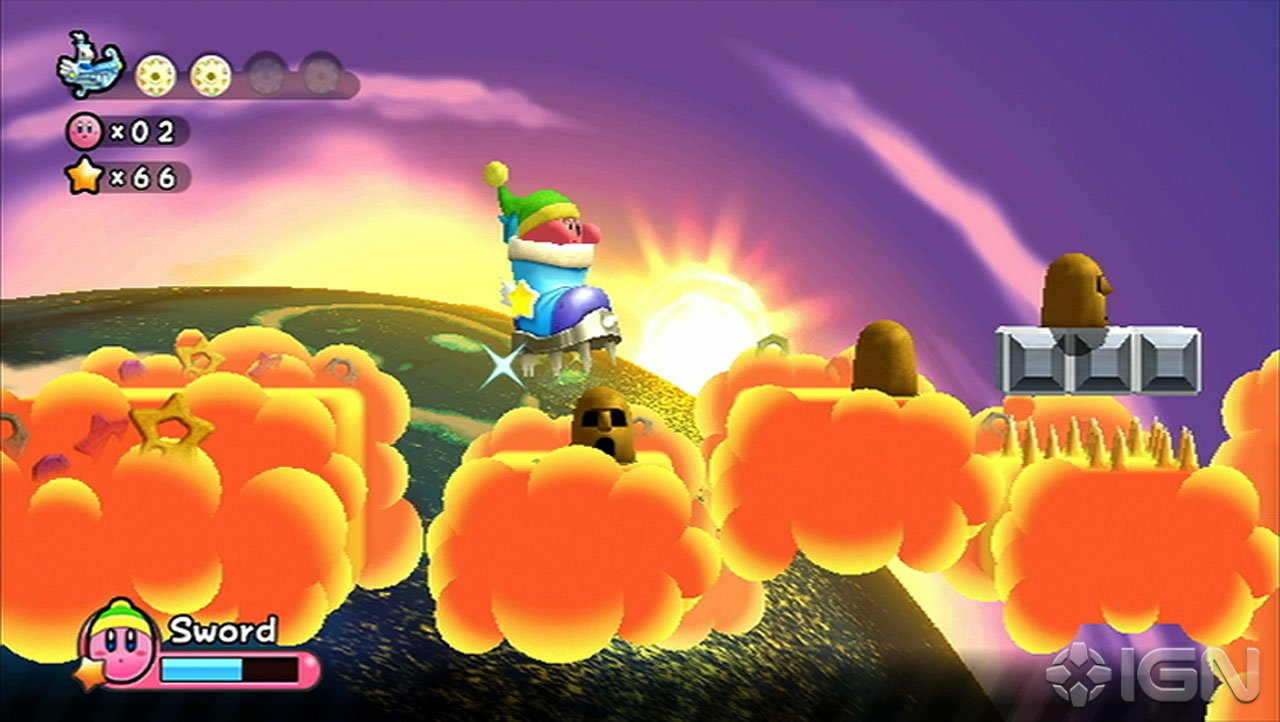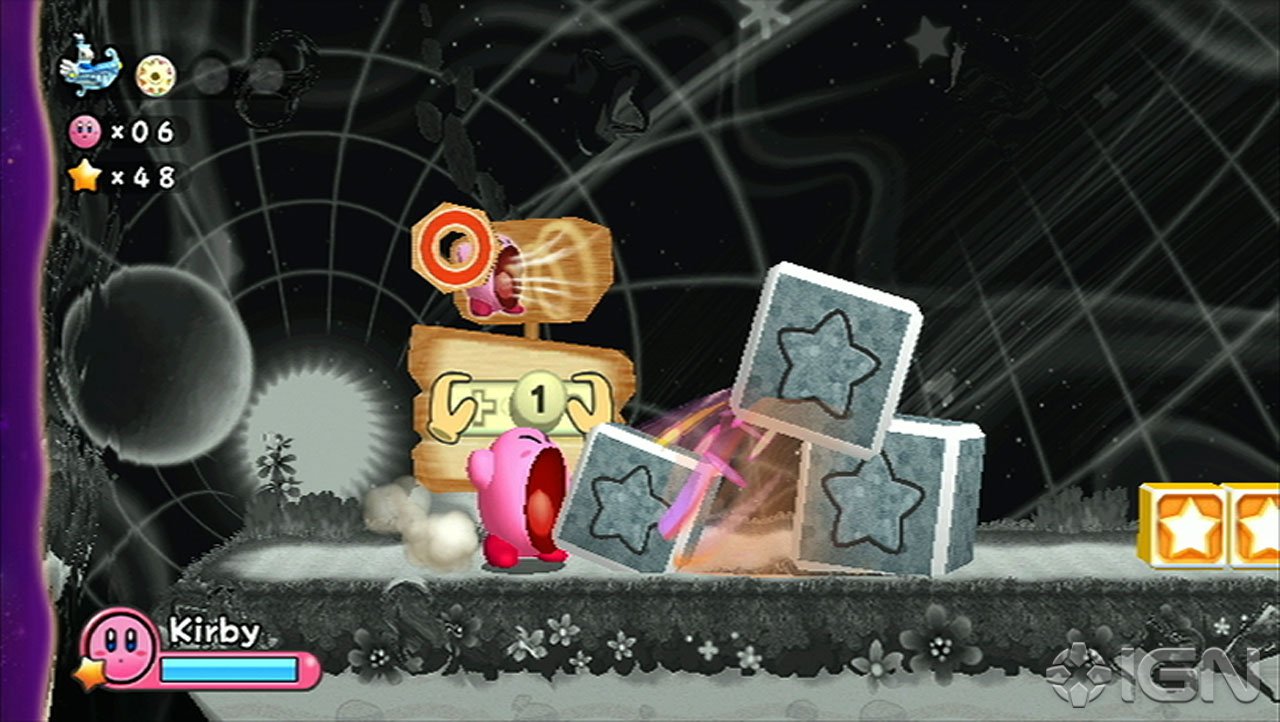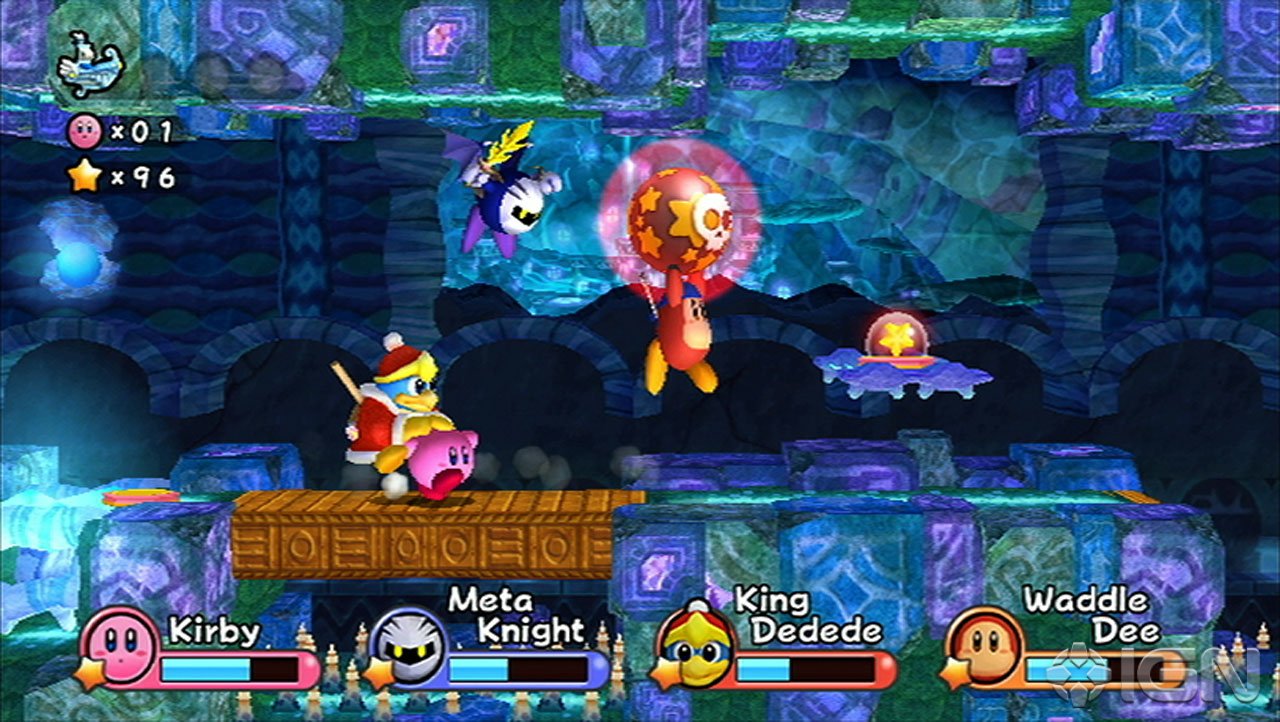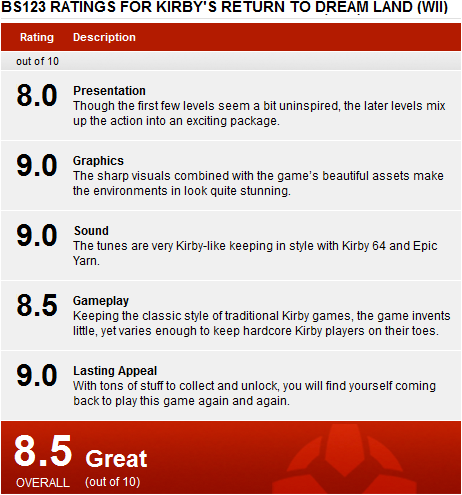Kirby has never looked this good.
Less than a year ago, we saw Kirby turn into a piece of yarn. Just a few months ago, we saw Kirby split into ten little pieces. Now, Kirby is back to his good old self in Kirby’s Return to Dream Land, his first traditional Kirby side-scrolling platformer since Kirby 64, a game released over a decade ago. But does traditional Kirby still hold well to today’s standards? Definitely.
Kirby’s Return to Dream Land brings back Kirby as we know him in a brand new side-scrolling adventure on the Wii. You play as the lovable and pink puffball Kirby as he traverses through several distinctly themed worlds, each consisting of 4-5 stages with a boss stage at the end. Levels are accessed a la “Kirby’s Adventure” style, with each level unlocking another one. The levels are pretty straightforward: get from the start to the end without dying. Pretty basic stuff, here.
The majority of the levels in the game are fairly easy. Most levels just require you to get from point A to point B, with relatively few challenged in between. It is not until you reach the latter worlds does the difficulty really begin to pick up, with numerous obstacles to dodge and hordes of enemies to destroy. In terms of aesthetics, every level is bright, colorful, and most importantly, beautiful. Dream Land’s whimsical setting is not only eye-appealing, but impressive as well.

Yes, it is very pretty indeed.
As far as gameplay is concerned, Return to Dream Land is a big step up from Epic Yarn. Players now have access to looser controls, easing up the pain and frustration that I had with Epic Yarn. Being a traditional Kirby game, Return to Dream Land also sees the return of Kirby’s sucking ability. By sucking enemies and swallowing them, Kirby is able to change into 23 different forms, each with unique abilities. Along with classic copy abilities such as spark and flame, Kirby also has several new powers, including whip and leaf.
Speaking of powers, Kirby’s Return to Dream Land introduces a new element that adds variety to the traditional Kirby formula. Super Abilities are dropped by special enemies or mini-bosses, allowing Kirby to transform into a variety of different forms. These abilities are used to solve special puzzles that, if solved, will lead to secret areas called “dimension levels.” Such puzzles include destroying certain blocks using a giant sword or guiding a ball of sparks through a series of gates.
The dimension levels that the super abilities open are sub-stages that provide a unique challenge. Upon one of these a secret areas, Kirby loses all of his copy abilities, which means that all Kirby can do is run and suck. With a dark wall of doom chasing behind you, Kirby must run, jump, inhale, hit switches, and many more as fast as he can.

Kirby&#Array;s impending doom awaits.
At the end of each dimension level, you will fight a boss using one of two given copy abilities. Upon defeating these bosses, you will receive two energy spheres, which are small round objects collected throughout the game. Every stage has 3-6 energy spheres to collect, some of them hiding in hard-to-reach places while others require certain abilities to access. Though the game itself is quite easy to complete, retrieving every single energy sphere is difficult and actually quite challenging.
Energy spheres are used to unlock sub-games outside of the main game. These sub-games include copy ability rooms and challenge rooms. Copy ability rooms allow you to choose your own copy ability before entering a certain stage. Challenge rooms provide a way to improve on certain copy abilities as you collect coins and race to the finish to try to get a high score. Each challenge room focuses on certain copy ability and forces you to utilize that copy ability in an assortment of ways in order to reach the end. Also unlockable using energy spheres are your typical Kirby minigames. While these minigames are fun to play at first, they get old and boring quite quickly, added nothing to the replayability to the title, even if you have friends over.
Luckily, you and your friends don’t have to be stuck with mediocre minigames; Return to Dream Land allows for co-op play for the main quest. You and up to three other friends can run through the entire game together. Though player one has to be Kirby, the other three can choose between Meta Knight (armed with the sword ability), King Dedede (armed with the hammer ability), Waddle Dee (armed with the spear ability), or simply a different colored Kirby. Unlike the co-op in New Super Mario Bros. Wii, players are able to interact with other players, including “face-to-face” healing, stacking, and sucking up other players.

Teamwork has never been this much fun.
The music in Return to Dream Land is very much in-line with Kirby 64 and Epic Yarn. Though some stages (even the latter ones) have rather disappointing soundtracks, the majority of the music in the game is very well done. From remixes of old beats to newly orchestrated songs, the music found in Return to Dream Land is overall very, very good.
Kirby still sounds like he did in Epic Yarn, though.
Overall, Kirby’s Return to Dream Land is a solid package of impressive design and fun platforming. The game is easy enough for young players to run through Dream Land easily, but the challenging elements of the game will bring veteran players back. With its colorful visuals, new gameplay mechanics, and a fun co-op multiplayer, Kirby’s Return to Dream Land should not be underlooked. Like New Super Mario Bros., Kirby’s Return to Dream Land is for everyone, despite its childish looks.

![Amazing Spider-Man Finale Features New [SPOILER] Costume](../../../../../../assets1.ignimgs.com/2018/06/01/untitled-br-1527892808294_small.jpg)